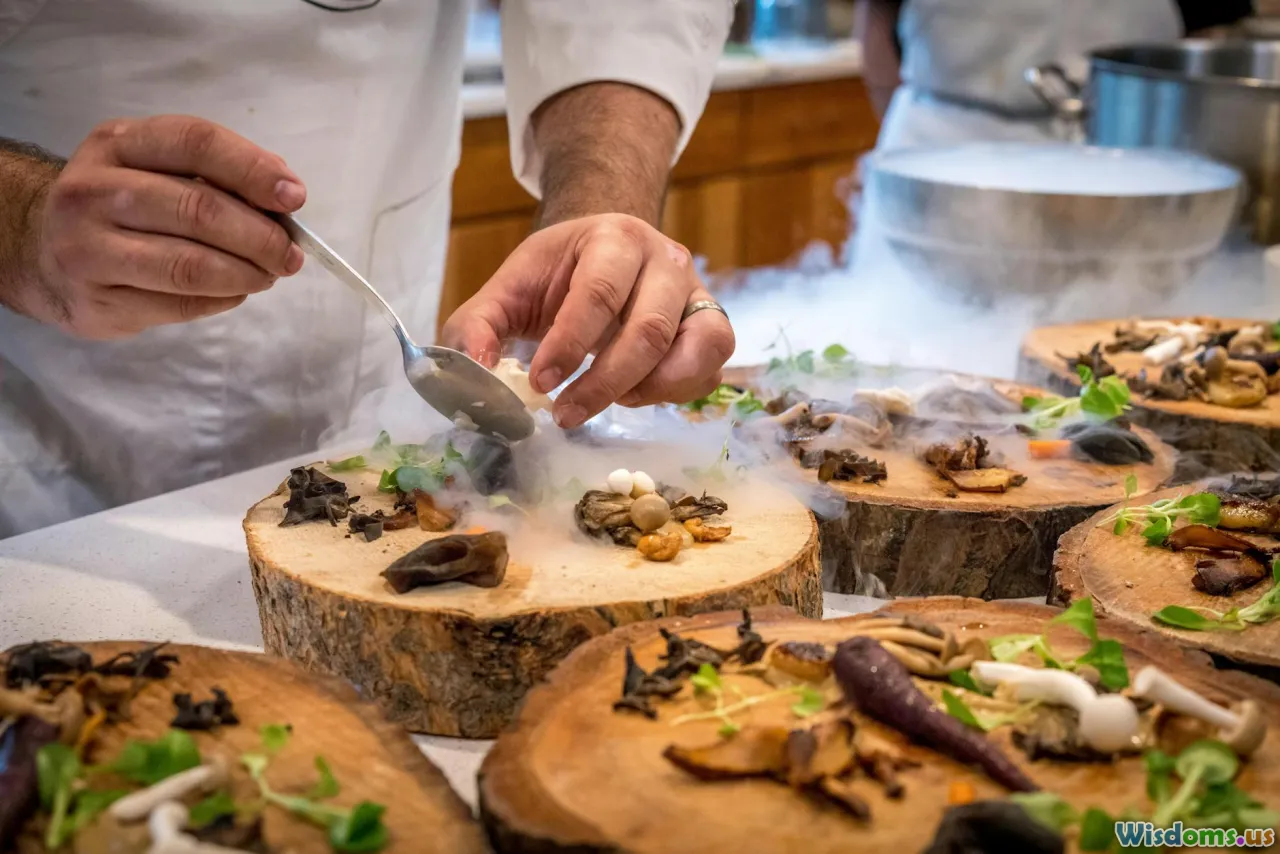
From Kitchen to Table: The Full Gourmet Experience
7 min read Explore how to elevate your dining from kitchen preparation to a full gourmet experience at the table. (0 Reviews)
From Kitchen to Table: The Full Gourmet Experience
Imagine taking a simple meal and turning it into a sensory celebration—an experience that goes beyond taste to touch emotion, aesthetics, and atmosphere. This is what we call the full gourmet experience: an art that transforms food from mere sustenance into a memorable event. But how does one move from kitchen preparation to table presentation to truly capture this? In this article, we will explore each stage, revealing techniques, inspirations, and practical tips to elevate everyday cooking into a full gourmet affair.
Selecting Ingredients: The Foundation of Flavor
The journey to a gourmet experience begins well before turning on the stove. It starts with ingredient sourcing. Freshness and quality are pivotal.
Local and Seasonal Produce
Turning to local farmers' markets or specialty vendors ensures fresher produce and imparts better flavor profiles. Seasonal ingredients, picked at peak ripeness, provide optimal taste and nutrition.
For example, heirloom tomatoes harvested at the height of summer pack more complexity than greenhouse tomatoes in winter. Chef Alice Waters once said, "Great cooking starts with great ingredients," emphasizing the undeniable role produce quality plays.
Artisanal and Specialty Products
Incorporating items like freshly ground spices, organic herbs, or hand-crafted cheeses can elevate flavors dramatically. For instance, using aged Parmigiano-Reggiano instead of generic Parmesan adds a rich umami depth to dishes.
Mastering Cooking Techniques: From Basic to Gourmet
Cooking methods turn raw ingredients into culinary art. Mastery here can mean the difference between a good meal and a gourmet feast.
Precision and Timing
Consider the precision in cooking meat to the perfect medium-rare or achieving the ideal texture in risotto through gradual broth additions. According to food scientist Harold McGee, "Timing and technique are your best allies in the kitchen."
Embracing Modernist Techniques
Embracing sous-vide, molecular gastronomy, or fermentation can create unique textures and flavors. Take sous-vide steak: cooking meat in a controlled low-temperature water bath results in astonishing tenderness and juiciness.
Layered Flavors through Building Components
Great chefs like Thomas Keller layer stocks, reductions, and infused oils to build profound flavors. For example, a mushroom risotto with a porcini broth and truffle oil achieves complexity beyond simple seasoning.
Plating: The Silent Language of Food
The moment food hits the table is a pivotal one. Visual appeal influences perception and expectation.
Principles of Plating
Balance, contrast, and focus guide plating—from arranging components to color coordination. The “rule of thirds” borrowed from photography helps to create focal points.
Tools and Techniques
Tweezers, ring molds, and brushes aren't just professional kitchen vanity; they allow for artful presentation. Chef Grant Achatz’s signature dishes at Alinea often look like abstract art, combining edible flowers and geometric shapes.
Storytelling Through Presentation
Design a plate that tells a story or captures an essence—such as a dish celebrating seasonal harvest or cultural heritage. This engages diners emotionally.
Creating the Dining Ambiance: Beyond the Plate
A truly gourmet experience isn’t just about food—it's about environment and atmosphere.
Table Setting
Use quality tableware and linens. Mixing textures, like a rustic wooden table with fine china, balances casual and elegant vibes.
Lighting and Music
Warm lighting enhances food’s visual appeal. Background music matching the meal’s theme enhances mood — think jazz for a French-themed dinner.
Engaging the Senses
Aromas from candles or fresh flowers, tactile contrasts in cutlery, and even thoughtfully curated conversation starters can enrich the experience.
Studies show that diners rate their satisfaction and taste perception higher when ambiance matches meal quality (source: Journal of Sensory Studies).
The Social Element: Sharing and Storytelling
Food’s power is amplified when shared. Presenting dishes with stories — about ingredient origins or cultural significance — mesmerizes guests.
Consider the shared joy of a perfectly roasted chicken—explaining the journey from free-range farming to spice rub transforms a meal into a narrative journey.
Conclusion: Make Every Meal an Occasion
The full gourmet experience is more than recipes and ingredients; it’s the holistic transformation of cooking and dining into an art form. It involves thoughtful ingredient selection, precise and inspired cooking, artistic plating, and curated ambiance.
Next time you cook, view your kitchen as a stage and your table as the canvas. Treat your guests — or yourself — to a multisensory journey that celebrates food, creativity, and connection. After all, eating isn’t just about sustenance; it’s an experience waiting to be savored.
References and Further Reading
- Waters, Alice. The Art of Simple Food
- McGee, Harold. On Food and Cooking: The Science and Lore of the Kitchen
- Keller, Thomas. Ad Hoc at Home
- Journal of Sensory Studies, 2020, Vol 35: Impact of Ambiance on Food Taste Perception
Embrace the journey from your kitchen to the table — and unlock the full potential of your meals.
Rate the Post
User Reviews
Popular Posts





















